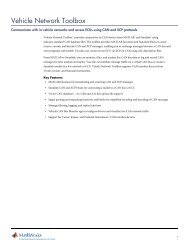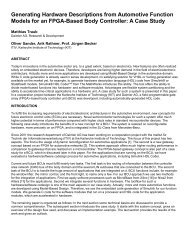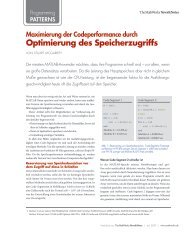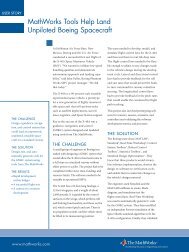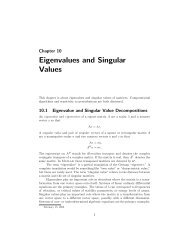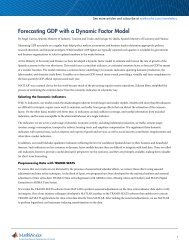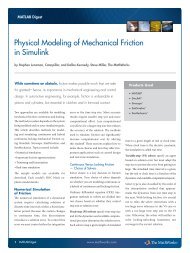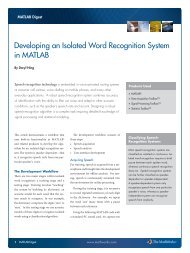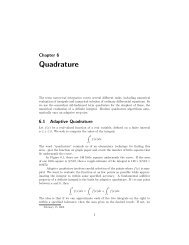Chapter 8 Exponential Function - MathWorks
Chapter 8 Exponential Function - MathWorks
Chapter 8 Exponential Function - MathWorks
You also want an ePaper? Increase the reach of your titles
YUMPU automatically turns print PDFs into web optimized ePapers that Google loves.
format compact<br />
format long<br />
Explain what you see when you try expex(t) for various real values of t.<br />
expex(.001)<br />
expex(-.001)<br />
expex(.1)<br />
expex(-.1)<br />
expex(1)<br />
expex(-1)<br />
Try some imaginary values of t.<br />
expex(.1i)<br />
expex(i)<br />
expex(i*pi/3)<br />
expex(i*pi)<br />
expex(2*i*pi)<br />
Increase the width of the output window, change the output format and try larger<br />
values of t.<br />
format long e<br />
expex(10)<br />
expex(-10)<br />
expex(10*pi*i)<br />
8.5 Instrument expex. Investigate both the cost and the accuracy of expex. Modify<br />
expex so that it returns both the sum s and the number of terms required n. Assess<br />
the relative error by comparing the result from expex(t) with the result from the<br />
built-in function exp(t).<br />
relerr = abs((exp(t) - expex(t))/exp(t))<br />
Make a table showing that the number of terms required increases and the relative<br />
error deteriorates for large t, particularly negative t.<br />
8.6 Complex wiggle. Revise wiggle and dot2dot to create wigglez and dot2dotz<br />
that use multiplication by e iθ instead of multiplication by two-by-two matrices. The<br />
crux of wiggle is<br />
G = [cos(theta) sin(theta); -sin(theta) cos(theta)];<br />
Y = G*X;<br />
dot2dot(Y);<br />
In wigglez this will become<br />
w = exp(i*theta)*z;<br />
dot2dotz(w)<br />
15




